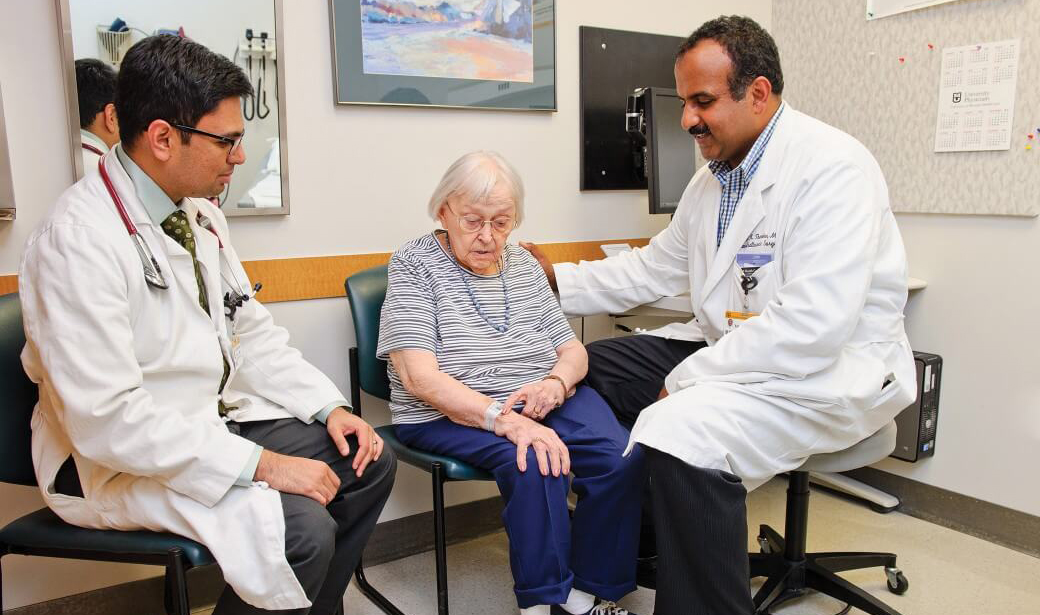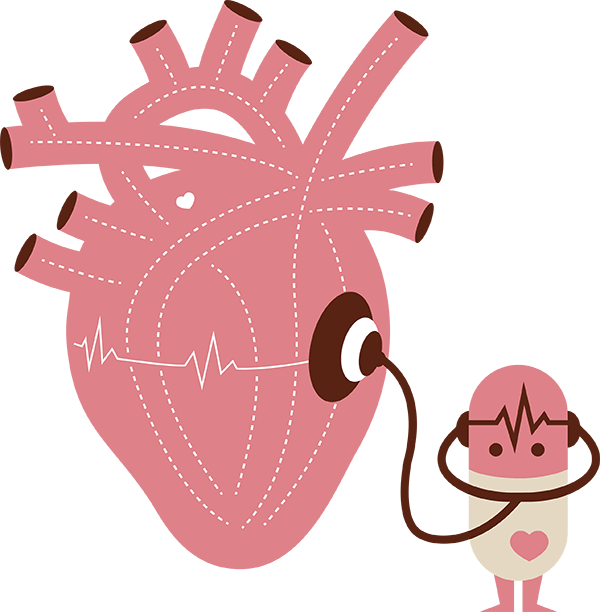Ever listen to someone’s heartbeat and wonder what causes that sound? It is the constant opening and closing of heart valves that regulate blood flow to and from the heart and lungs. These “drummers” are tissue-paper thin membranes and contribute to approximately 80 million beats a year. With all this use, it is not surprising that any one of four valves can wear out over time.
“Although people may attribute being tired or short of breath to aging, in fact, it may actually be because of a valve disease like aortic stenosis, which is treatable,” said Arun Kumar, MD, an interventional cardiologist at the MU Heart and Vascular Center. “We encourage families to be present at clinic visits because treatment is a joint decision and families may have a perspective that is helpful to everyone.”
University of Missouri Health Care’s heart valve team is dedicated to caring for patients with valve disease due to aging or other causes, such as a birth defect.
MU’s Heart Valve Clinic is located at University Hospital’s Cardiology Clinic in Columbia. Most patients are elderly and their family members are active in making decisions with them and the health care team. Jessica Holt, RN, nurse coordinator of the clinic, serves as the facilitator for patients and families. She schedules all appointments and tests, from the patient’s initial appointment and evaluation through treatment and follow-up care.
“I am the patient and family’s contact person so they don’t have to call for scheduling different tests or appointments for the clinic,” Holt said. “Our approach is nice because they see two physicians — a cardiologist and a surgeon — in one visit. Both physicians are able to talk right there with the patient and be on the same page. We take this information to our multidisciplinary meetings to make sure we provide the best care for each patient, as a team. After clinic visits and procedures, the team contacts the patient’s primary care doctor with updates.”
Kumar said coordination and collaboration are key aspects of the clinic.
“We formulated the clinic so that tests can be done in an efficient manner and patients can interact with multiple providers in one clinic experience rather than repeated visits to see multiple providers,” Kumar said. “It is very helpful because, if we take the example of aortic stenosis, this disease is most common in elderly individuals. We respect how difficult it often is for patients to travel and make arrangements for family members to take off work to take the patient to and from appointments, so we try to make that easier.”
Aortic stenosis is the most common valve disease among patients at the clinic. It is a narrowing of the aortic valve opening, which restricts blood flow. Symptoms include shortness of breath, a heart murmur, fatigue, chest pain, fainting or light-headedness.
“Many patients with severe symptoms benefit from an aortic valve replacement,” said Ajit Tharakan, MD, a cardiothoracic surgeon at the MU Heart and Vascular Center. “However, their other health conditions can prevent some patients from being a candidate for a traditional open replacement procedure.”
In December 2014, MU Health Care began offering a new, less invasive procedure for patients previously considered too high-risk for a traditional repair with open-heart surgery. University Hospital was the first hospital in mid-Missouri to offer this procedure, named transcatheter aortic valve replacement, or TAVR.
“With this procedure, we are able to repair the damaged valve using a transcatheter approach, a less invasive method that does not require open-heart surgery,” Tharakan said. “It is an excellent technology for patients who are extremely high-risk for open-heart surgery. After TAVR, we have seen remarkable improvement. Patients have had a significant resolution of symptoms and improved quality of life.”
Tharakan, Kumar and Holt all stress that a patient’s quality of life is an important factor in determining the best treatment for each patient.
After all, patients are at the heart of everything they do.

Helping patients with heart valve disease takes a team. The patient, family members and patient’s primary care doctor or cardiologist who referred the patient to MU’s Heart Valve Clinic all play important roles. At the clinic, patients benefit from the collaborative talents of MU’s cardiovascular care team with expertise in the three fields below.




